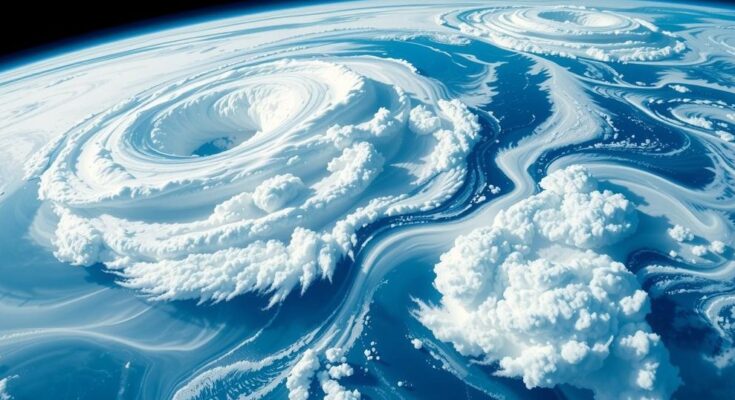The Skylab missions in 1973 allowed astronauts to observe Hurricane Ellen and lightning patterns over the Andes, resulting in valuable meteorological data that enhanced storm forecasting. The human capacity for observation was underscored as essential for scientific studies in space.
In the summer of 1973, Skylab 3 astronauts embarked on an impressive journey, completing 858 orbital trips around Earth. During this period, they observed the formation of Hurricane Ellen off the West African coast. Astronaut Alan L. Bean remarked on the storm’s size and cloud formation, expressing excitement about the view from Skylab’s low-Earth orbit.
The crew utilized cameras onboard the space station to capture stereo photographs of the hurricane, which were invaluable to meteorologists for analyzing cloud dynamics in tropical systems. These images provided essential three-dimensional data, aiding in the understanding of storm behavior and cloud formation.
Similarly, Skylab 4 astronaut Edward G. Gibson made significant observations of lightning patterns produced by thunderstorms over the Andes Mountains in South America. Gibson noted that these storms generated simultaneous lightning events across a vast area, suggesting a collective phenomenon akin to sympathetic solar flares.
The insights gained from Gibson’s lightning observations, along with the photographs of Hurricane Ellen, exemplified the wealth of meteorological data collected by astronauts during the Skylab missions. These findings contributed to enhancing regional weather data and improved storm forecasting accuracy.
Moreover, the valuable observations made by Skylab astronauts reinforced the importance of having human presence in space for scientific inquiry. Scholars of the era acknowledged that the astronauts’ ability to discern key features and respond to unexpected events was a crucial aspect of their contributions to orbital studies.
In summary, the Skylab missions yielded significant meteorological data through the observations of hurricanes and lightning by astronauts Alan L. Bean and Edward G. Gibson. Their contributions not only advanced the understanding of atmospheric phenomena but also emphasized the indispensable role of human observers in space exploration. The Skylab missions provided insights that improved storm forecasting and highlighted the unique advantages of human perception in scientific research.
Original Source: www.nasa.gov




